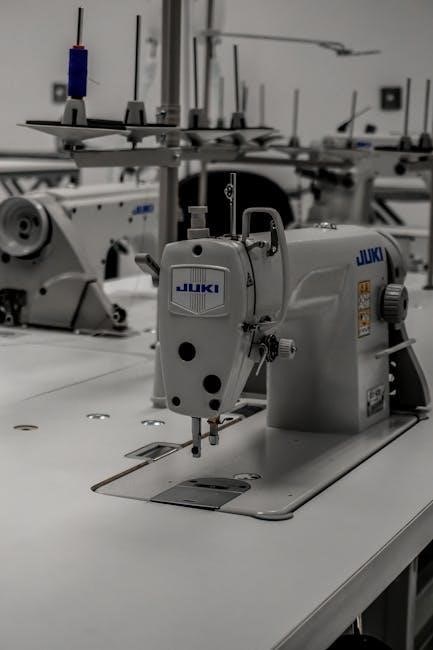The Sunflower by Simon Wiesenthal is a deeply moving memoir exploring forgiveness, guilt, and human morality during the Holocaust․ A dying Nazi soldier’s plea for forgiveness confronts Wiesenthal, sparking a lifelong ethical debate․ The book’s emotional depth and moral complexity resonate universally, making it a cornerstone of Holocaust literature․ Its PDF version remains widely sought after for its accessibility and profound impact on readers worldwide․
Overview of the Book
The Sunflower by Simon Wiesenthal is a harrowing memoir that recounts the author’s experiences in a concentration camp during the Holocaust․ The book centers on a poignant encounter between Wiesenthal and a dying Nazi soldier who confesses his atrocities and seeks forgiveness․ This moral dilemma becomes the framework for exploring themes of guilt, forgiveness, and human ethics․ Wiesenthal’s vivid storytelling and emotional depth make the book a powerful exploration of humanity’s darkest moments․ The PDF version of The Sunflower is widely sought after for its accessibility and remains a significant work in Holocaust literature, resonating with readers globally․
Historical Context and Significance
The Sunflower is set against the backdrop of World War II and the Holocaust, where Simon Wiesenthal, a Holocaust survivor, recounts his harrowing experiences․ The book delves into the moral complexities of forgiveness and guilt, framed by the atrocities of the Holocaust․ Its historical significance lies in its ability to provoke deep reflection on human ethics and the consequences of unchecked hatred․ The PDF version of The Sunflower ensures its message reaches a broader audience, preserving Wiesenthal’s poignant account and its relevance in understanding one of history’s darkest periods․ The book remains a vital resource for Holocaust education and ethical discourse․

Themes and Moral Dilemmas in “The Sunflower”
The Sunflower explores profound themes of forgiveness, guilt, and human dignity, challenging readers to confront the ethical complexities of the Holocaust․ The PDF version amplifies its accessibility, ensuring timeless relevance․

Forgiveness and Guilt: The Central Conflict
The Sunflower revolves around Simon Wiesenthal’s encounter with a dying Nazi soldier who seeks forgiveness for his atrocities․ This moment becomes a profound moral dilemma, exploring the tension between forgiveness and guilt; Wiesenthal’s silence in response to the soldier’s plea symbolizes the complexity of absolving such crimes․ The book delves into the emotional and ethical struggles of Holocaust survivors, questioning whether forgiveness is possible or even just․ The PDF version of The Sunflower highlights these themes, offering readers a poignant reflection on humanity’s capacity for mercy and the weight of collective guilt․
The Holocaust and Its Emotional Toll
The Sunflower vividly portrays the Holocaust’s devastating emotional impact on individuals and communities․ Simon Wiesenthal’s personal experiences and observations highlight the psychological scars left by unimaginable horrors․ The book captures the trauma, grief, and struggle for survival, offering a raw glimpse into the human cost of the Holocaust․ The PDF version ensures this poignant narrative remains accessible, allowing readers to grasp the profound emotional toll and its lasting effects on survivors․ Wiesenthal’s account serves as a powerful reminder of the Holocaust’s legacy and its enduring influence on collective memory and individual healing․

Simon Wiesenthal: The Author and His Legacy
Simon Wiesenthal was a Holocaust survivor, Nazi hunter, and advocate for justice․ His work as a writer and activist left an indelible mark on Holocaust education and remembrance․ The PDF version of The Sunflower ensures his story reaches global audiences, preserving his legacy and continuing his mission to educate future generations about the Holocaust’s atrocities and the importance of forgiveness and moral responsibility․
Biography of Simon Wiesenthal
Simon Wiesenthal was born in 1908 in Búchach, Austria-Hungary․ A Holocaust survivor, he endured unimaginable suffering in Nazi concentration camps․ After the war, Wiesenthal dedicated his life to tracking Nazi war criminals and advocating for justice․ He founded the Jewish Documentation Center in Vienna, playing a pivotal role in bringing perpetrators to trial․ His work as a writer and activist shed light on Holocaust atrocities, with The Sunflower becoming a seminal work․ Wiesenthal’s legacy endures through his tireless pursuit of accountability and his commitment to educating future generations about the Holocaust’s horrors and moral lessons․
Wiesenthal’s Role in Nazi Hunting and Justice
Simon Wiesenthal became a relentless pursuer of Nazi war criminals after surviving the Holocaust․ He dedicated his life to documenting atrocities and tracking down perpetrators, earning him the nickname “The Nazi Hunter․” Through his Jewish Documentation Center in Vienna, Wiesenthal gathered evidence and created dossiers on thousands of Nazis, aiding in their prosecution․ His work led to the capture of high-profile figures like Adolf Eichmann․ Wiesenthal’s efforts not only sought justice but also ensured the Holocaust’s atrocities were never forgotten, raising global awareness and accountability for the crimes committed during World War II․

The Story Behind “The Sunflower”
The Sunflower originates from Simon Wiesenthal’s harrowing experience during the Holocaust, where a dying Nazi soldier confessed atrocities and sought forgiveness, provoking deep reflection on morality and guilt․
The Encounter with the Dying Nazi Soldier
In the heart of The Sunflower, Simon Wiesenthal recounts a poignant encounter during the Holocaust․ A dying Nazi soldier, recognizing Wiesenthal as Jewish, confesses his atrocities and begs for forgiveness․ This deeply unsettling moment forces Wiesenthal into a moral dilemma, questioning the possibility of forgiveness for unimaginable crimes․ The soldier’s plea and Wiesenthal’s silence underscore the complexity of guilt, responsibility, and the human capacity for empathy․ This encounter becomes the emotional and ethical core of the book, challenging readers to confront the boundaries of forgiveness and the weight of collective guilt․
The Request for Forgiveness and Its Implications
The dying Nazi soldier’s plea for forgiveness in The Sunflower presents a profound moral dilemma․ His request, rooted in remorse for atrocities committed, challenges Simon Wiesenthal to grapple with the limits of forgiveness․ Wiesenthal’s silence in response underscores the complexity of absolving crimes against humanity․ This moment sparks universal questions about guilt, atonement, and the ethical responsibility of victims to forgive․ The soldier’s final request hauntingly highlights the tension between personal guilt and collective responsibility, leaving readers to reflect on the boundaries of forgiveness in the face of unimaginable evil․
Key Themes Explored in the Book
The Sunflower delves into forgiveness, guilt, and human morality, exploring the emotional toll of the Holocaust․ It examines the complexity of human dignity and ethical responsibility, prompting deep reflection on justice, compassion, and the weight of historical atrocities․
The Complexity of Human Dignity and Morality
The Sunflower explores the intricate interplay between human dignity and morality, particularly in extreme circumstances․ Wiesenthal’s encounter with the dying Nazi soldier challenges readers to grapple with the duality of human nature—capable of both atrocities and repentance․ The book delves into the moral ambiguities of forgiveness, questioning whether individuals can forgive on behalf of others or if such acts are beyond human authority․ The PDF version amplifies these themes, making the narrative accessible to a broader audience and prompting global reflection on justice, compassion, and the enduring impact of historical atrocities․
Religion, Ethics, and Personal Responsibility
The Sunflower delves deeply into the intersection of religion, ethics, and personal responsibility, particularly in the context of the Holocaust․ Wiesenthal’s Jewish faith and the soldier’s Christian background highlight the moral dilemmas of forgiveness and guilt․ The book raises questions about the role of religion in ethical decision-making and whether individuals can bear the burden of forgiveness for collective atrocities․ The PDF version ensures these profound ethical debates reach a wide audience, encouraging readers to reflect on their own moral frameworks and responsibilities in the face of historical injustices․ The narrative underscores the universal relevance of these themes․
“The Sunflower” in PDF Format: Accessibility and Impact
The Sunflower in PDF format ensures widespread accessibility, allowing readers to engage with its profound themes digitally․ Its influence in digital formats has expanded its reach globally, making it easier for audiences to explore Wiesenthal’s moral dilemmas and reflections on forgiveness, guilt, and human dignity․ The PDF version remains a vital resource for students, researchers, and readers seeking to understand the Holocaust’s emotional and ethical complexities․
Why the PDF Version is Widely Sought After
The PDF version of The Sunflower is highly sought after due to its accessibility and convenience․ Readers can easily download and access the book across multiple devices, making it ideal for both academic and personal use․ The digital format allows for quick searches and references, enhancing the reading experience․ Additionally, the PDF version ensures that Wiesenthal’s powerful narrative reaches a broader audience, including students and researchers, who appreciate its portability and ease of sharing․ Its widespread availability has made it a preferred choice for those exploring Holocaust literature and ethical dilemmas․
The Book’s Influence in Digital Formats
The Sunflower in digital formats has significantly expanded its reach, impacting a global audience․ The PDF version, in particular, has made the book accessible to a younger generation of readers․ Its digital presence has sparked online discussions, fostering dialogue about forgiveness and morality․ The convenience of e-books and PDFs allows readers to engage with Wiesenthal’s work anytime, anywhere, ensuring his message endures․ This digital accessibility has cemented the book’s role in Holocaust education and ethical discourse, making it a vital resource for both educational and personal reflection․
Simon Wiesenthal’s Other Works and Contributions
Simon Wiesenthal’s contributions extend beyond The Sunflower, including pivotal work in Holocaust literature and his relentless pursuit of Nazi accountability, leaving a lasting legacy in justice and education․
Major Literary and Activist Contributions
Simon Wiesenthal was a prominent Holocaust survivor, author, and activist whose work transcended The Sunflower․ He dedicated his life to documenting Nazi crimes and advocating for justice, becoming a symbol of resilience․ Wiesenthal founded the Simon Wiesenthal Center, which combats antisemitism and promotes tolerance․ His literary works, including The Sunflower, are renowned for their profound exploration of morality and forgiveness․ Through his activism and writing, Wiesenthal educated generations about the Holocaust, ensuring its lessons endure․ His contributions remain vital in the global pursuit of justice, human rights, and Holocaust education, leaving a lasting legacy of courage and activism․
His Legacy in Holocaust Education
Simon Wiesenthal left an indelible mark on Holocaust education, dedicating his life to preserving the memories of victims and combating antisemitism․ His work established him as a pivotal figure in educating future generations about the atrocities of the Holocaust․ Through his books and activism, Wiesenthal ensured that the lessons of the past remain relevant today․ His efforts laid the foundation for Holocaust studies worldwide, inspiring educators and scholars to continue his mission․ Wiesenthal’s legacy endures through institutions like the Simon Wiesenthal Center, which promotes tolerance and understanding, ensuring his impact on Holocaust education remains timeless and profound․
The Sunflower remains a powerful exploration of forgiveness and justice, resonating across generations․ Its PDF format ensures Wiesenthal’s message of humanity and accountability reaches future generations, inspiring reflection and dialogue on morality and reconciliation․
The Enduring Relevance of “The Sunflower”
The Sunflower by Simon Wiesenthal continues to resonate deeply, offering timeless reflections on forgiveness, guilt, and humanity․ Its exploration of moral dilemmas during the Holocaust remains universally relevant, transcending time and context․ The PDF version ensures accessibility, allowing readers worldwide to engage with Wiesenthal’s poignant narrative․ The book’s ability to provoke thought and spark dialogue about justice, ethics, and personal responsibility solidifies its enduring importance․ As a historical and philosophical text, it bridges the past and present, urging future generations to confront the complexities of human morality and the lessons of the Holocaust․
Wiesenthal’s Message for Future Generations
Simon Wiesenthal’s message in The Sunflower emphasizes the importance of remembering the Holocaust and its lessons for humanity․ He urges future generations to grapple with the complexities of forgiveness, justice, and morality․ Through his experiences, Wiesenthal underscores the need to confront the past while fostering empathy and understanding․ His work serves as a powerful reminder of the dangers of hatred and the enduring strength of human dignity․ By sharing his story, Wiesenthal hopes to inspire future generations to pursue truth, justice, and peace in a world still grappling with moral dilemmas․













































